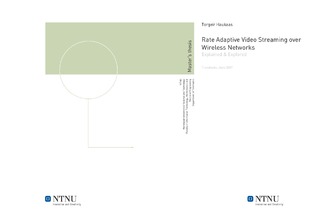Rate Adaptive Video Streaming over Wireless Networks: Explained & Explored
Master thesis
Permanent lenke
http://hdl.handle.net/11250/261690Utgivelsesdato
2007Metadata
Vis full innførselSamlinger
Sammendrag
In the search for improved methods of transporting real time video and VoIP over the Internet, new rate control mechanisms need to be developed and standardized. Ongoing research in the field has led to several new protocol suggestions. This thesis covers simulations of rate adaptive video transfers over wireless networks using one of them, TCP-Friendly Rate Control (TFRC). It is known that both TCP and TFRC have performance issues in wireless networks because their rate controllers react to random packet error as if it were congestion. On the other hand, UDP as used today for many real-time services, endanger the health of the network with unfair occupation of network resources. Moreover, the shared medium topology of many wireless networks add significant delay to the data transport. Through the use of ns-2 and Evalvid-RA, several simulation scenarios have been formed to illustrate how these problems affect real-time video as perceived by a wireless end user. The simulations illustrate the missing inter- and intra-flow fairness of UDP, reveal protocol and implementation vulnerabilities of TFRC, and show a remarkable delay caused by the IEEE 802.11b networks. The thesis also includes a study of past and current protocol refinement proposals and suggestions to novel re-design. The study reveals that the variety of proposals form an information stream that is difficult to follow, a scarcity of problem domain overview and decisive variations in the problem definition.
